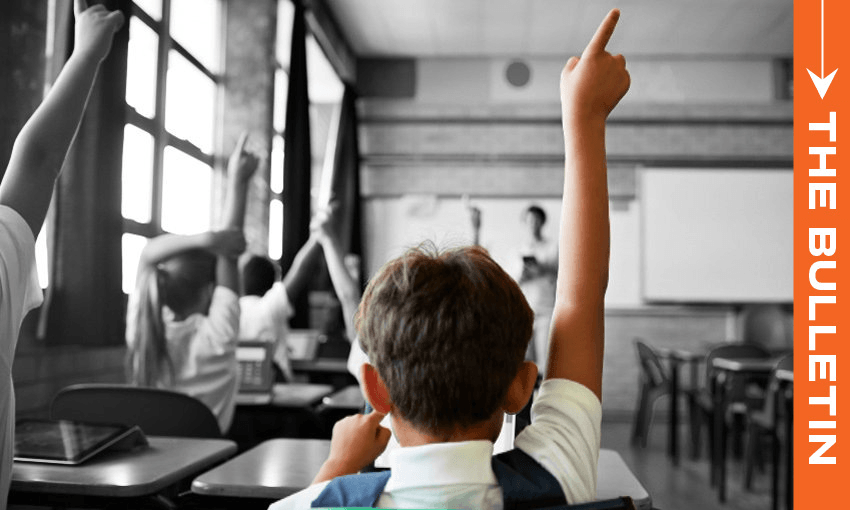Christopher Luxon says the policy is what’s needed to address serious issues with reading, writing and maths in primary schools. Others aren’t so sure, writes Catherine McGregor in this excerpt from The Bulletin, The Spinoff’s morning news round-up. To receive The Bulletin in full each weekday, sign up here.
Back to basics – and a lot more tests
In December 2021, two weeks after becoming National Party leader, Christopher Luxon told Businessdesk (paywalled) that New Zealand’s poor educational achievement rate was “without doubt the most startling and worrying” discovery of his political career so far. Yesterday he unveiled his turnaround plan: under a National government all primary and intermediate students will learn reading, writing and maths for at least an hour a day, and will undergo “standardised, robust assessment” in those subjects every six months. In many respects, the Teaching the Basics Brilliantly policy echoes the arguments of education expert Michael Johnston, a senior fellow at the NZ Initiative thinktank. The current curriculum, he argued in the NZ Herald, “offers teachers little guidance on the specific knowledge that they should teach, and almost none on how to sequence learning so that children proceed on firm foundations”. Last Friday the Ministry of Education itself released the first phase of its new common-practice model for maths and English pedagogy, part of a wider refresh of the New Zealand curriculum and how subjects are taught.
Testing times for literacy rates
When it comes to literacy, nearly everyone agrees there’s an urgent need for improvement. A report last year by Dr Nina Hood of Education Hub noted that just 35% of students in year eight are achieving at or above the curriculum level for writing, while reading ability at both primary and secondary school levels is steadily declining. “Only 60% of 15-year-olds in New Zealand are achieving above the most basic level of reading, meaning a staggering 40% are struggling to read and write,” wrote Hood. The decline in writing ability appears to be of particular concern. When the Ministry of Education piloted its new NCEA Level 1 literacy and numeracy standards, only one in three students passed the writing component, while around two-thirds passed reading and numeracy tests, reported the NZ Herald (paywalled). “Even more concerningly, just 2% of students in decile 1 schools passed the writing assessment, compared with 62% in decile 10 schools.”
National Standards by another name?
National’s proposal for two standardised tests a year for all primary and intermediate school children attracted immediate pushback from the NZEI, the union that represents primary school teachers. The policy was the return of National Standards by stealth, said NZEI president Mark Potter who said it promised “an even more intensive form” of the testing system introduced by the National government in 2010 and scrapped by Labour in 2017. “National Standards narrowed the curriculum, put undue pressure on children, increased teacher workload and weren’t even an accurate measure of a child’s progress,” then NZEI president Lynda Stuart said at the time. Defining the curriculum year-by-year was an “old and unsatisfactory” policy that wasn’t suitable for Aotearoa, Potter told TVNZ Breakfast yesterday. “Children don’t come in a lovely production line all operating at the same time, at the same level. What we do know about learning, that’s evidence-based, is that they all learn at different times and different rates,” he said.
An alternative to testing
Not every country believes regular standardised testing is the best way to help children learn. The poster child for the standardised testing-free system is Finland, the country with the world’s best education system according to the World Economic Forum (WEF). In Finland, “all children… are graded on an individualised basis and grading system set by their teacher” says the WEF, while its education system is “grounded on equal opportunities for all, equitable distribution of resources rather than competition, intensive early interventions for prevention, and building gradual trust among education practitioners, especially teachers”, wrote one policy analyst.
